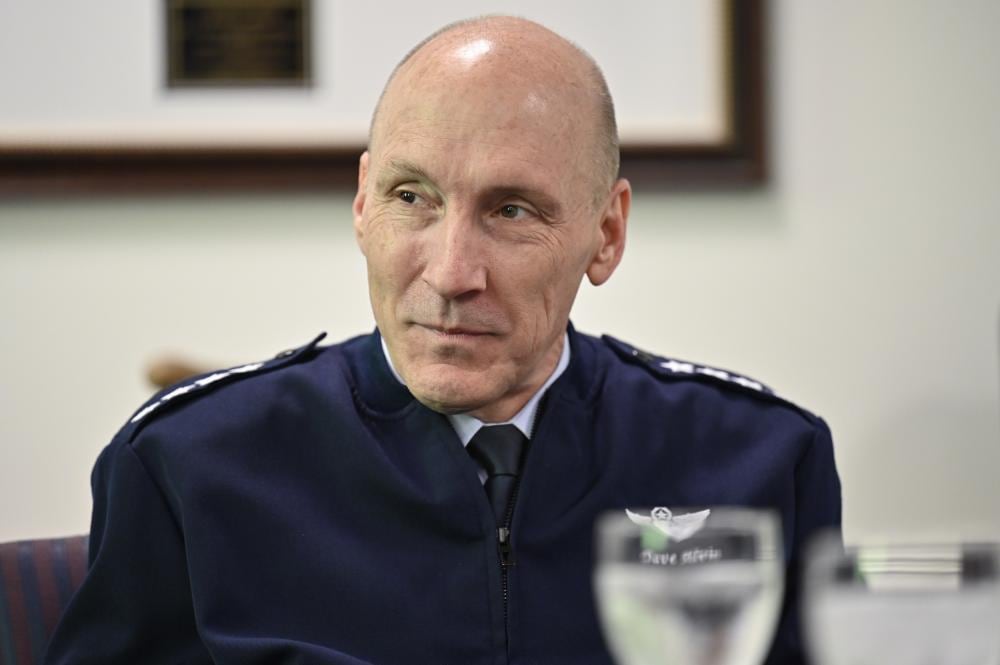Gen. David Allvin, the Air Force’s No. 2 officer, is the frontrunner to become its next chief of staff, four people familiar with the deliberations told Air Force Times.
Allvin, a career mobility pilot and strategist who has served as Air Force vice chief of staff since November 2020, is the service’s internal pick for chief, according to one current military officer, two retired officers and another expert outside of the Pentagon, all of whom were granted anonymity to discuss the issue.
He is the preferred candidate of Gen. CQ Brown Jr., the Air Force’s current top officer who is expected to earn President Joe Biden’s nomination for chairman of the Joint Chiefs of Staff. The competition has been “very personality-dependent,” based on who Brown wants as his successor, one source said.
RELATED
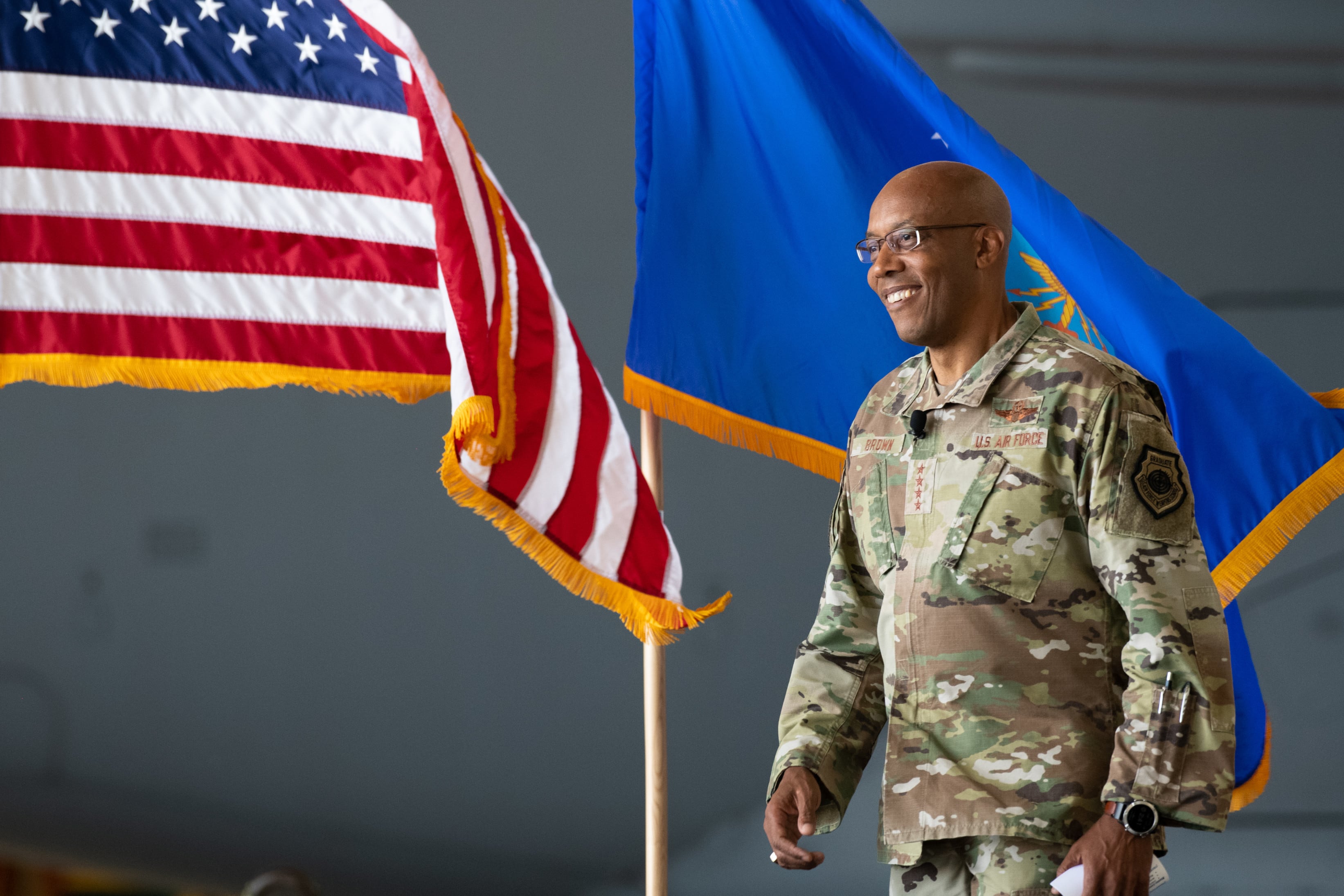
Lt. Gen. Jim Slife, the Air Force’s deputy chief of staff for operations and a leader in the special operations community, is in line to become Allvin’s right-hand man as Air Force vice chief of staff, two sources added.
If nominated by Biden and confirmed by the Senate, Allvin and Slife would take over the third-largest branch of the armed forces, a nearly $180 billion portfolio spanning around 689,000 uniformed airmen and civilians. They would inherit a sweeping effort to modernize the service’s inventory of decades-old aircraft, adapt the force to the digital era and encourage young Americans to enlist.
The pair still requires Biden’s approval for the top jobs, sources cautioned.
Their nominations aren’t a “done deal,” said one former military officer with knowledge of the discussions. Another source believes the process is around 80% complete and that the race has been stable for a few months.
U.S. Transportation Command boss Gen. Jacqueline Van Ovost could still be in the running as well if Biden seeks to interview her, according to current and former officers. Sources in and out of the federal government have viewed Van Ovost, who previously oversaw the Air Force’s airlift and tanker fleets, as a top contender for the job. She is one of three female four-star officers in the Defense Department.
Another potential pick, Pacific Air Forces boss Gen. Kenneth Wilsbach, was recently nominated to lead Air Combat Command.
It’s unclear when candidates would interview with Biden or when he would sign off on the nomination.
An Air Force spokesperson said it’s premature to comment on whether Allvin is in line for chief of staff. The National Security Council did not respond to a request for comment.
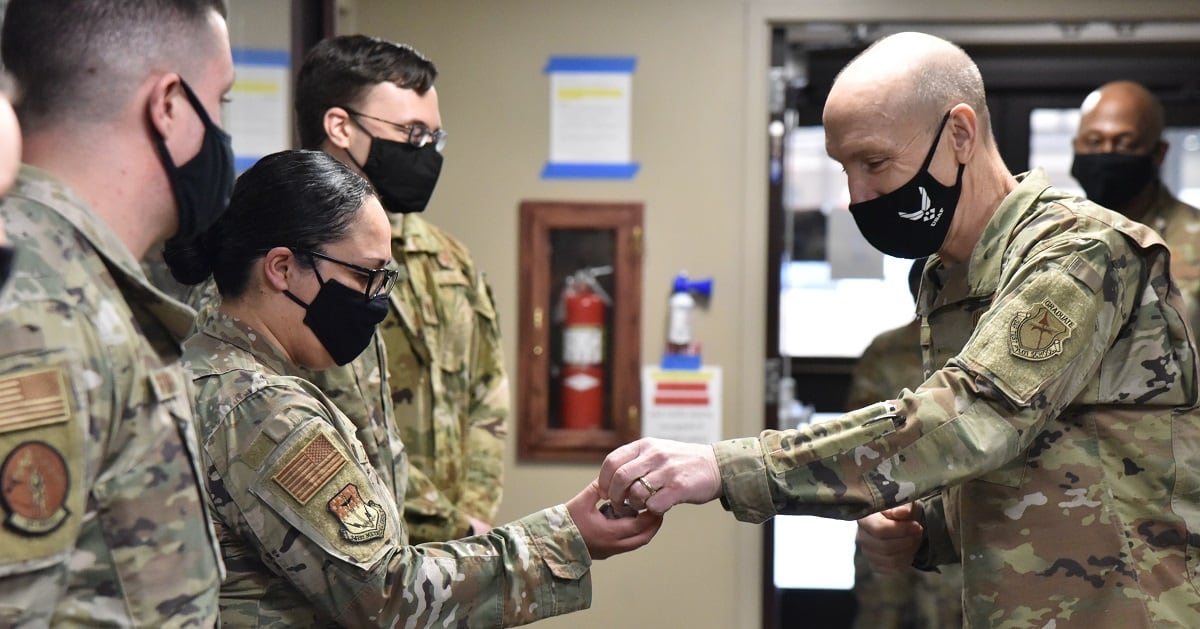
“Presidents don’t always accept or follow the ‘recommendations’ of the DoD as to who for a particular position, especially a service chief,” said Arnold Punaro, a defense consultant and retired Marine Corps two-star general who served as the staff director on the Senate Armed Services Committee.
For example, Defense Secretary Lloyd Austin could reject the service’s suggestion and put forward his own favorite, as could the president himself, Punaro said.
A retired four-star who spoke on condition of anonymity said Allvin and Austin have worked together but the vice chief spends more time in meetings with Deputy Defense Secretary Kathleen Hicks.
Once senior military nominees are approved by the Pentagon, they head to the White House Military Office and the National Security Council for further scrutiny.
“While the basic process is well-known and well-used and has lots of paperwork, even for the military, each administration and each president has their own approach for the most senior military nominations,” Punaro added. “Once the president makes a decision, then there is a host of SASC and Senate paperwork that has to be completed.”
In short: “There is no such thing as a routine four-star nomination,” he said.
The ‘consummate insider’
A 1986 graduate of the U.S. Air Force Academy, Allvin began his career as a cargo pilot in the C-12F Huron and C-141 Starlifter while stationed in Washington state and Germany.
He changed tack to become a test pilot in 1994, flying the C-17 Globemaster III and C-130J Super Hercules airlifters as the Air Force built its first squadrons of those airframes in the mid-1990s.
Allvin hoped to parlay his test pilot experience into a job as an astronaut, but decided it wasn’t the right time to join NASA and turned to academics instead, a former general told Air Force Times.
He spent two years as a student at the Air Command and Staff College and School of Advanced Airpower Studies at Maxwell Air Force Base, Alabama, and joined Air Mobility Command headquarters as part of the commander’s action group in 1999.
Over the next decade, he would bounce between command positions at pilot training wings nationwide and policy jobs in the Pentagon. All told, Allvin amassed more than 4,600 flight hours in nearly a dozen airframes.
He pinned on his first star in September 2010 and took command of NATO’s aviation training command in Afghanistan, then returned to Air Mobility Command at Scott Air Force Base in Illinois a year later.
There, he led the 618th Air and Space Operations Center — AMC’s hub for tasking tanker and airlift missions around the world — from April 2012 to June 2013. He also served as its vice commander for eight months.
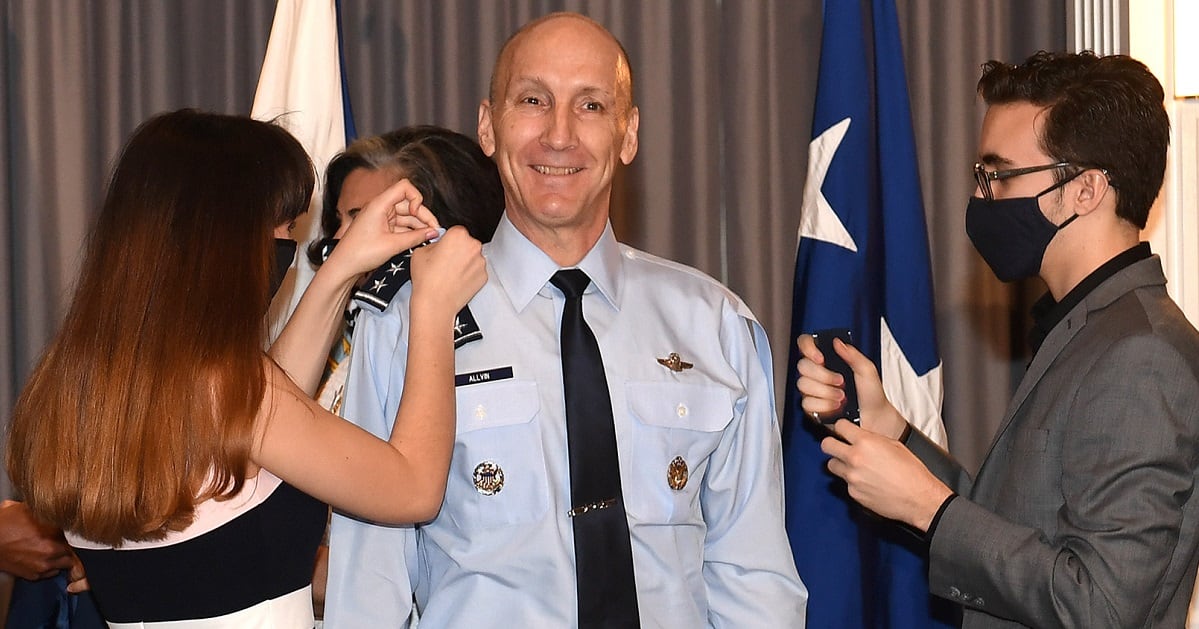
As a general officer, Allvin has risen through multiple strategy and planning roles at the Pentagon, Air Force headquarters, U.S. European Command and the United Nations over the past decade. That experience has positioned him as the “consummate insider,” a stronger advocate for Air Force interests and deft navigator of the federal bureaucracy, sources said.
After Russia illegally annexed Ukraine’s Crimean peninsula in early 2014, Allvin — who became EUCOM’s strategy and policy director in 2015 — drew up a new war plan for the command, the retired four-star said. That landed him a job on the Joint Staff in 2018 as the vice director, then director, of strategy, plans and policy.
“When he was a J-5, he was thinking in a way that’s bigger and different,” said Clint Hinote, who recently retired as the Air Force’s lieutenant general in charge of long-term force planning. “That’s been a hallmark, and I think that is going to be something we need.”
‘The one in the trenches’
Allvin took over as Air Force vice chief of staff in November 2020, where he plays a central role in shaping the service’s budget and managing its acquisition programs.
Sources described him as a well-read, professorial leader with the self-discipline and Washington know-how to make an impact.
He seeks out insight across and outside of the federal government when crafting an opinion on a subject, and is secure enough in his own perspective to respectfully debate others, multiple retired officers said.
“I have had sparring matches with him that I think a lot of senior leaders would have been very off-put by having a three-star challenge them,” Hinote said. “We’ve actually grown closer in our working relationship because of it.”
One of Allvin’s most significant accomplishments as vice chief has come as the leader of the Joint Requirements Oversight Council and other strategic planning groups within the Pentagon, Hinote said. His leadership ensured more Air Force priorities were included in the Defense Department’s recent budget requests than may have been otherwise.
“We got a tremendous amount of victories and plus-ups in the budget,” Hinote said. “There’s so much that is different than what we had before, and I think he really deserves a lot of credit for that because he’s the one in the trenches every meeting, trying to make the case for the Air Force.”
While Allvin has a wealth of Pentagon experience, he has less operational command experience than predecessors like Brown and Gen. David Goldfein. That may concern some observers, but Hinote thinks there are ways to solve the issue.
“I actually think you can use social media a little bit differently, and you could have a lot of town halls and listening sessions” to bring in the perspectives of rank-and-file airmen, Hinote said.
Allvin has sought out those perspectives.
He has spearheaded a new group to rethink recruiting policies and professional development initiatives to help airmen pursue nontraditional careers in the service, and mentors generals and other staffers that are earlier on in their careers.
His version of the annual “Vice Chief’s Challenge” invites airmen to submit their ideas on agile combat employment, the Air Force’s term for deploying quickly and without a large logistics footprint to respond to threats more easily.
He has cultivated a close relationship with Air Force Secretary Frank Kendall and works well with Slife, a similarly strategic thinker who looks to improve airpower overall rather than push parochial interests, sources said.
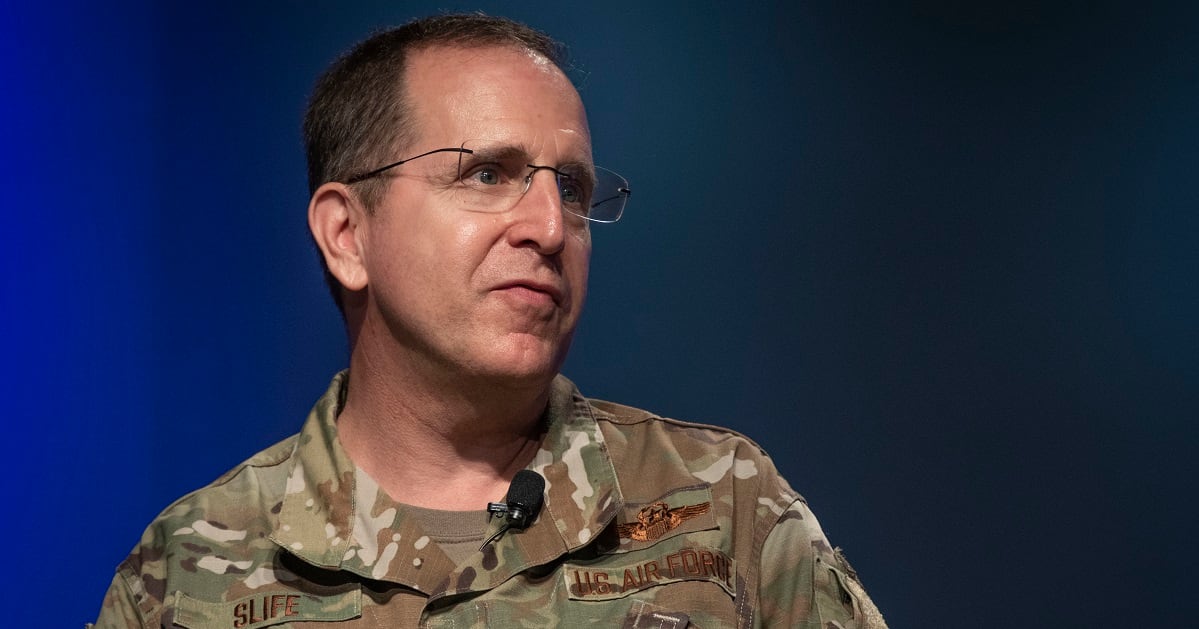
Slife, a former helicopter and drone pilot, arrived at the Pentagon in December after leading Air Force Special Operations Command for more than three years and serving as the vice commander of U.S. Special Operations Command.
“He’s not very patient. He’s not willing to look at things and shrug his shoulders,” one retired general said of Slife. “I think they’ll probably be, kind of, [Allvin] as the idea guy … and then Slife as the executor.”
It’s the first time in more than a decade that neither the Air Force chief of staff or its vice chief hail from a fighter background.
Gen. Norton Schwartz, a mobility pilot, and vice chief Gen. William Fraser, a bomber pilot, served as the Air Force’s top two leaders for about a year together in 2008-2009. Schwartz overlapped with Gen. Larry Spencer, a finance officer, for less than a month in 2012 as well.
“Some will say it with a sense of, ‘This could be really good for the Air Force because you’re not having the groupthink problem.’ And then there’ll be some people that say, ‘Oh, my God, the Air Force is going to pot. They’re not even letting combat pilots lead it anymore,’” Hinote said.
He believes the Air Force’s plan to divest airframes like the older F-15 Eagle models and the A-10 attack plane, and to buy fewer F-35 Joint Strike Fighters than initially planned, while investing in more advanced drones and communications technology would happen regardless of what top brass previously flew.
Another source pointed out that Lt. Gen. Scott Pleus, a career fighter pilot currently serving as deputy commander of U.S. Forces in Korea, is nominated to move to the Pentagon as the Air Staff director to ensure that perspective isn’t lost.
As the new face of the Air Force, Allvin will need “sharp elbows” to fight for the service’s interests in upcoming budget and strategy debates within the Pentagon and with Congress, and convince the public of its value, one retired officer said.
The Air Force is pushing Congress to grant its $185 billion budget request for fiscal 2024 and green-light a sweeping plan to retire hundreds of older aircraft that leaders say will be ineffective in future wars.
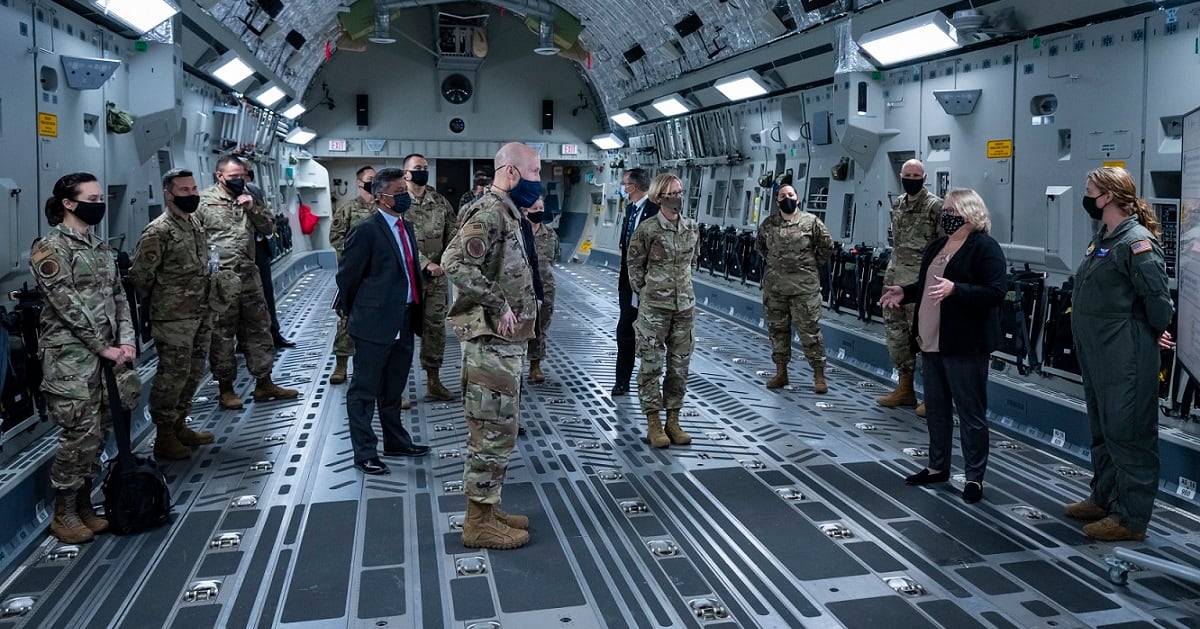
If Allvin is selected, he will inherit “a lot of the same problems” that Brown has faced, the retired four-star said, “which are primarily how to convince the system that, after 30 years of underfunding the Air Force, it’s going to take some fairly drastic measures to let them catch up with the efforts China has made.”
The new chief will also play a key role in reversing the Air Force’s struggle to recruit and retain airmen — particularly pilots, maintainers and cyber operators.
After nearly 40 years in the military, Allvin believes he has more to give to solve those problems.
“He really wants the job,” the retired four-star said. “He thinks he can do a good job at it and he thinks there are things that need to be done.
“He thinks he’s prepared, and his family is prepared, to go through this,” he added. “And that’s important.”
Rachel Cohen is the editor of Air Force Times. She joined the publication as its senior reporter in March 2021. Her work has appeared in the Washington Post, the Frederick News-Post (Md.), Air and Space Forces Magazine, Inside Defense, Inside Health Policy and elsewhere.
